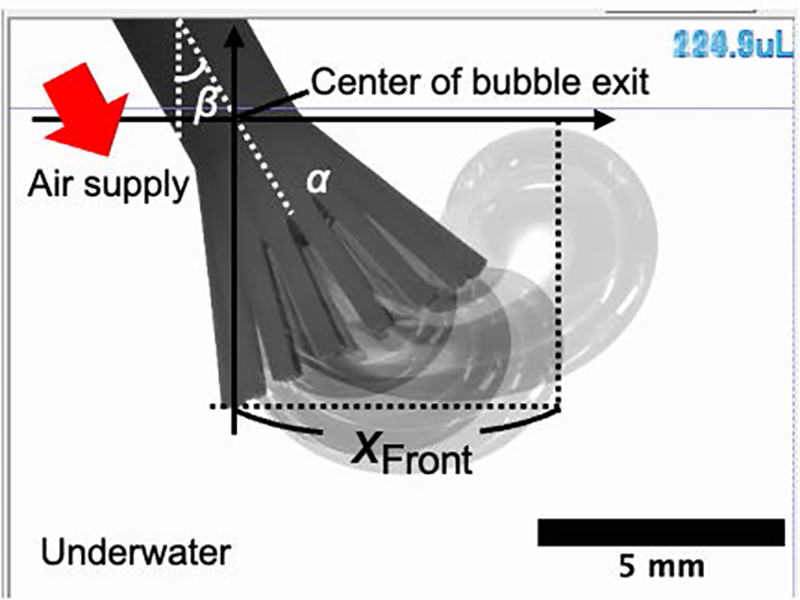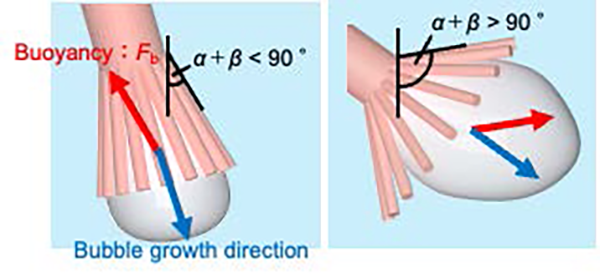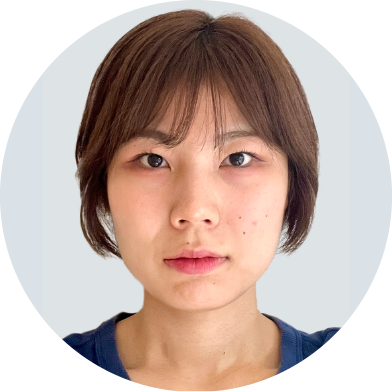Abstract
The star-nosed moves its 22 tentacles underwater to control the shape of bubbles exhaled from its nose.
These bubbles capture odor molecules, and by inhaling the bubbles back in, the star-nosed mole perceives
odor underwater.[1] While the bubble growth is regulated by the dynamic motion of the tentacles, the
effect of the tentacles' dynamic structure on the bubble growth mechanism remains unclear. Here, we
emulated the tentacles topology and surface wettability to study the bubble growth dynamics. We
designed the three-dimensional model structures whose surface is modified with a superaerophobic layer,
and observed the bubble growth behavior. Figure 1 shows the time-lapsed stuck image of the underwater
bubble growth within the model structure. We defined the tentacle opening angle as α, the tentacle
inclination angle as β, and quantified the bubble growth with advancing length XFront. We found the
bubble growth process can be classified into three stages. First, the bubble grows isotropically while
maintaining a spherical shape (stage I). Then, the bubble starts deforming (stage II). Finally, the bubble
is detached from the model structure (stage III). These transitions during the bubble growth can be
explained by a change in the working direction of buoyancy and capillary forces, as illustrated in Figure
2. In that, the threshold determining whether the direction of buoyancy and the parallel component of
the bubble growth direction are in the same direction or opposite direction is for α+β = 90 °. We
experimentally confirmed XFront as functions of α and β, indicating that XFront reaches maximum for α+β = 90 °. This indicates that the balance between bubble retention and forward motion is optimal for
α+β = 90 °. Therefore, we conclude the most effective topology to grow bubble as far as possible
without detachment is the topology fulfilling α+β = 90 °.



